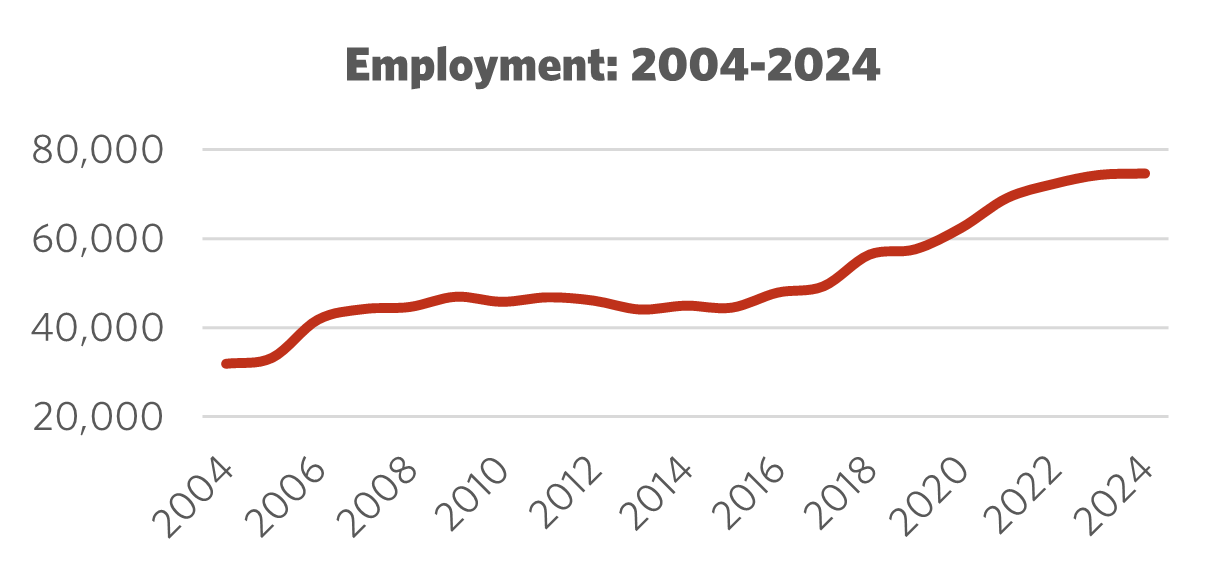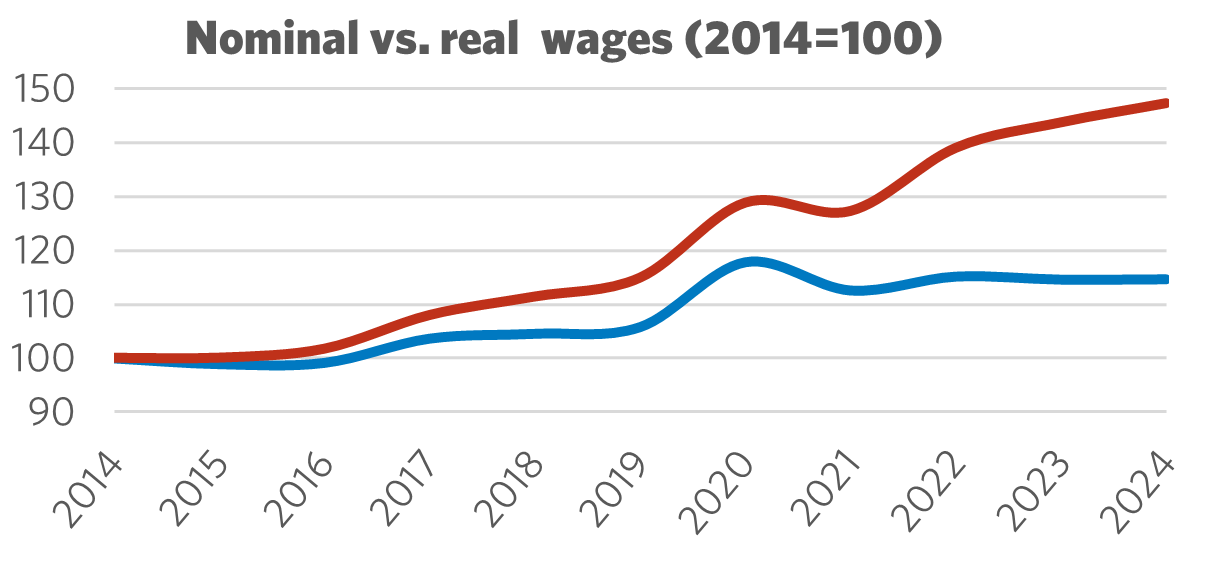Sector Facts and Figures
| Sector Facts and Figures | |
| OUTPUT | |
Sector GDP Share of Canadian GDP | $5.8 billion 0.3% |
| EMPLOYMENT | |
Total Employment 10-year change | 74,500 +66.1% |
| Percentage of part-time workers | 4.9% |
| Average hourly wage | $36.10/hr |
10-year real wage change | +14.6% |
| Average Work Hours/Week | 36.2 |
| ENVIRONMENT | |
Greenhouse Gas Emissions (2022) 10-year change Share of Canadian industry total | 274kt +16.6% 0.04% |
| LABOUR | |
| Union Coverage Rate | 14.2% |
| Unifor Members in the Industry* | 9,000 |
| Share of Total Unifor Membership | 2.8%
|
| Number of Unifor Bargaining Units* | 61 |
Unifor in the Warehousing Industry
Unifor’s 9,000 warehouse members work for both dedicated warehouse and logistics companies as well as in warehouse operations for companies in other sectors. Major employers include Loblaws Companies, Metro Inc., Walmart, Amazon, Loomis Express, DHL Express and Sobeys (some of these 9,000 members are also counted in other sector membership totals).
Warehouse and logistics workers in locations across Canada have been joining Unifor in record numbers in recent years. In 2024, 850 workers at a Walmart distribution centre in Mississauga became the first Walmart warehouse workers in Canada to unionize. In July 2025, 700 workers at an Amazon distribution centre in Delta, BC, joined the union. Unifor’s success in the sector demonstrates the value of strategic organizing, especially in a sector that relies so heavily on precarious work.
| Select Unifor Employers* | Approx. # Members* |
| Loblaws Companies | 1,050 |
| Metro Inc. | 1,170 |
| Walmart | 850 |
| Amazon | 700 |
| Loomis Express | 500 |
| DHL Express | 500 |
| Sobeys | 450 |
Current Conditions
With a workforce of more than 74,500, working in thousands of locations across the country, Canada’s warehouse industry is one of the most invisible but vital sectors of the economy. Almost every single good purchased spent at least some time in a warehouse or distribution centre.
The warehouse sector has seen a staggering 66% increase in employment over the last ten years. This workforce increase reflects the rapid expansion of warehousing and storage capacity as well as final-mile and direct-to-home logistics, with new facilities opening up across the country, especially in key hubs like: Mississauga/Brampton in Ontario; Delta, Surrey, Richmond, and Burnaby in British Columbia; and Dorval, Pointe Claire, Sainte-Laurent, Lachine in Quebec.
Traditionally, warehouses were designed to store products, to ensure customer demand was met despite shifting market conditions. As supply chains became more complex with increasing globalization, some warehouses evolved into distribution centres: faster-paced, value-added environments where products are packaged, or mixed, and where orders were sorted, picked, or assembled.
Warehouse workers are enduring some of the worst impacts of the new economy’s relentless push for higher profits and a more flexible workforce. Many are over-worked, underpaid, and unsafe on the job. The list of causes is long, and includes: concerns about workplace health and safety; unsustainable workload; facility automation and rapid technological change; work ownership; the lack of stable, permanent and full-time work; low wages and inadequate benefits. The warehouse sector is under-unionized thanks to employer reliance on sub-contracting and contract-flipping.

Figure 1: Employment 2004 – 2024

Figure 2: Nominal vs. Real Wages (2014 = 100)
Moving Forward: Developing the Warehousing Industry
Working conditions in the warehouse sector are generally poor, and there is significant room for improvement.
Increasing union density in the warehouse sector is the most effective way to enhance working conditions for warehouse workers and transform traditionally precarious, low-quality jobs into good jobs.
To create good jobs in this sector, workers will need to establish an industry standard with basic minimum thresholds for wages and working conditions. Workers must also advocate for strict public health and safety regulations governing time standards on the job, and the pace of work.
Warehouses are also on the frontlines of new, experimental artificial intelligence-driven automation and technological change. New tech advancements, without proper oversight, pose the most significant structural threat to the warehouse and logistics workforce – including threats of massive job displacement and deskilling. AI technologies are evolving rapidly, impacting every aspect of warehouse and logistics operations, including workplace surveillance. While it is unlikely workers can reverse the tide of technological change, they can leverage collective bargaining and advocate (through unions) for legislative and regulatory reform to mitigate AI’s worst impacts.
Unifor has a long history of formal pattern bargaining, particularly in the auto industry. Unionized workers in various sectors have also engaged in informal pattern bargaining (i.e. negotiating standards in certain workplaces that are applied equally to others), even in industries with a fragmented corporate structure and a diverse range of employers. As union organizing continues in this rapidly growing sector, workers must develop platforms of dialogue, engagement and joint solidarity.
Sector Development Recommendations
- Increasing union density in the warehouse sector is the primary way to improve working conditions for warehouse workers and to turn traditionally precarious and lower quality warehouse jobs into good jobs.
- In order to create good jobs in the warehouse sector, workers will need to establish an industry standard with basic minimum thresholds for wages and working conditions.
- Employment regulations and legislation must be enacted to improve workplace health and safety, create more standard and full-time jobs, and create more accountability and effective penalties for bad employers in the warehouse industry
- The warehouse and logistics sector exists at ground zero of AI-driven automation and technological change. Collective bargaining and legislative/regulatory reform are needed to ensure workers are not left behind as the sector grows and evolves.


